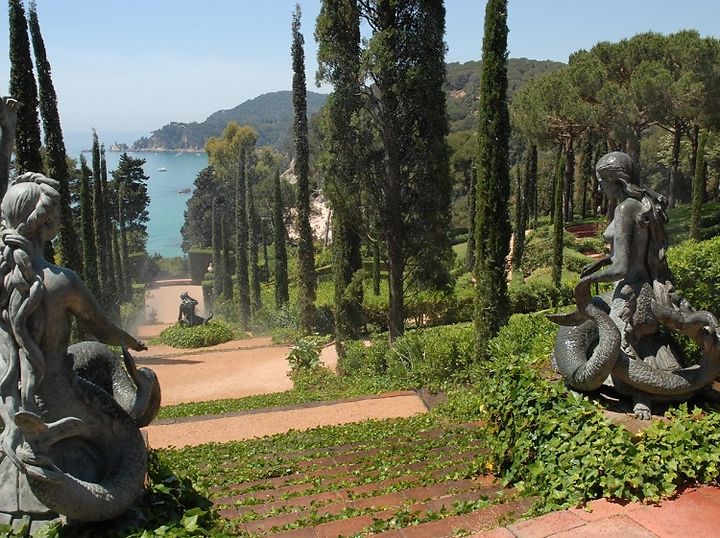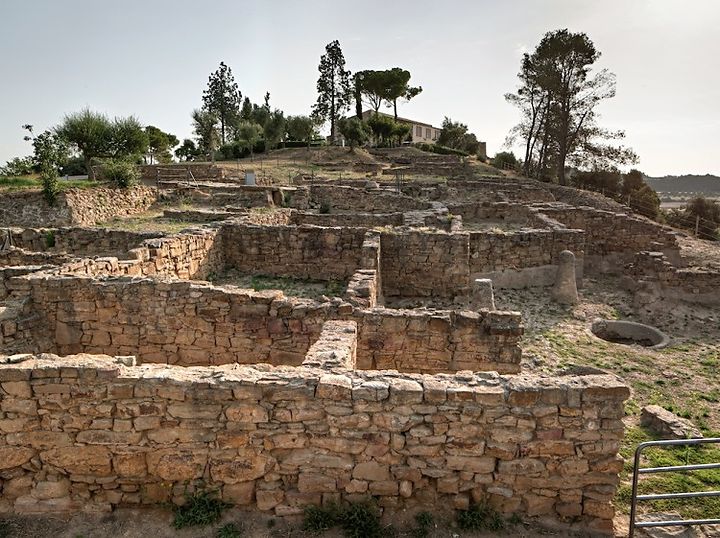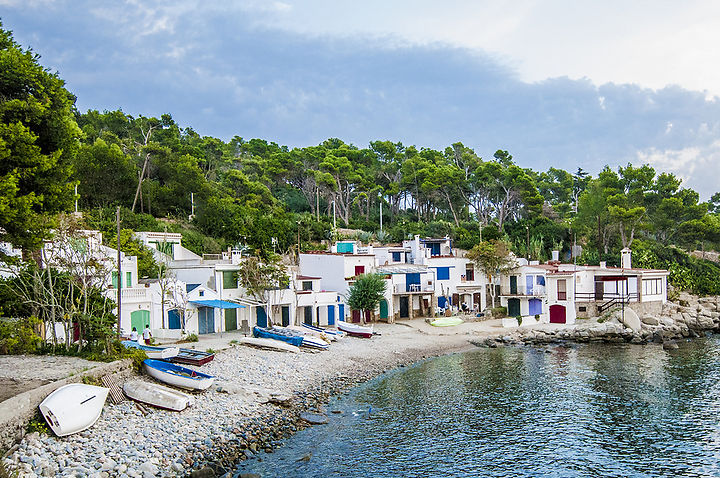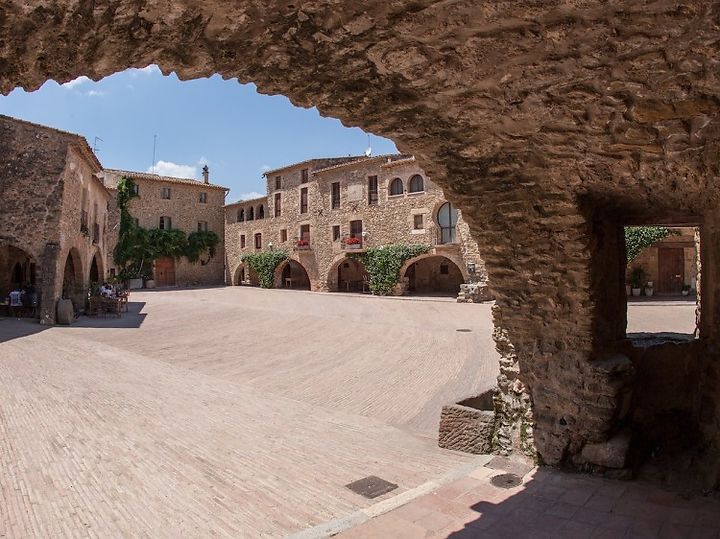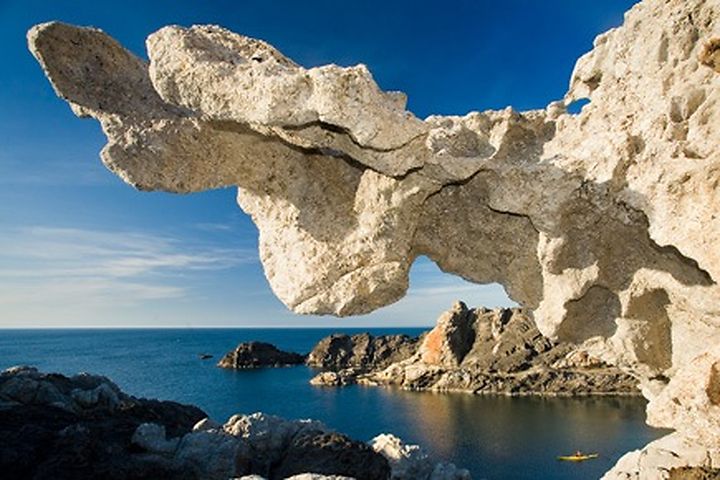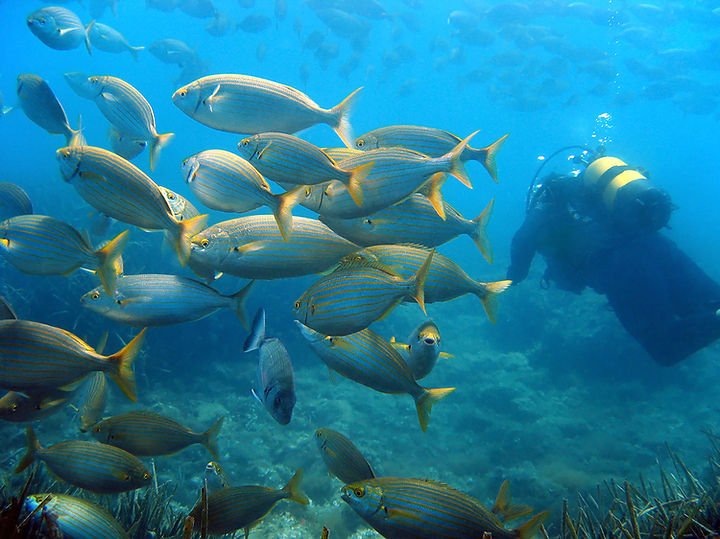Things to see and do on the Costa Brava
Beaches, villages, castles, gardens... these are the don't miss places and sights in the most authentic Costa Brava.
All right, it's true. This region is the apple of Catalonia's eye, and maybe we do go on a bit about the Costa Brava, but come on - it's incredible! And not only because of its coves and fishing villages, or the festivals or trendy clubs. It's the friendly locals, the beauty of the landscape and the cultural traditions - everything comes together to create a marvellous whole. While it's full of typical (and stereotypical) spots, there are still hidden gems to discover.
You’ve undoubtedly heard of Lloret de Mar, but in among all the talk of Brits abroad (and all that that entails), you probably never realised it is home to some noucentista gardens that wonderfully maintain the spirit of that early-20th-century movement – the Jardins de Santa Clotilde (photo 1). We suggest a walk through the gardens followed by a well-deserved break on the beach of Sa Boadella, about five minutes away on foot and one of the few in the town that hasn’t been built up.
Another way to discover the Costa Brava is through its history. Among the cliffs and valleys, you’ll find the remains of ancient civilisations – the ruins of Empúries are the most well-known (photo 2), but there is also the dolmen of the Cova d’en Daina in Romanyà de la Selva, the megalithic settlement in Roses and the Iberian village in Ullastret (the biggest of its kind in Catalonia). And the majority are close or next to a beach. (Of course, if you’re going to conquer a village, it’s always better if it comes with sea views or private access to a gorgeous small beach, right?) One recommendation is the beach in the Iberian village of Castell, in Palamós. The village is tiny, so you can visit it in a matter of minutes and then take the rest of the day for two walks along the coastal path ('camí de ronda') – right toward s’Alguer (photo 3), a small cove with the traditional boats of yesteryear fishermen, or left toward Cala Estreta, where you can take a swim au naturel.
If you’re more the Middle Ages type, don’t miss the castle and walled grounds in Tossa de Mar, the old town in Pals (Photo 4), the triangle made up of Monells, Cruïlles and Sant Martí Vell in the centre of the Gavarres mountain range, as well as the castles of Peralada and Peratallada. For fortifications, the place to head is the Sant Ferran castle in Figueres. If you’ve read 'Victus' and after 600 pages still don’t understand everything about strongholds and moats, don’t worry (you’re not alone) – seeing them up close here will make it all clear: the wall, the weaponries, casemates, the stables, and even underground contramine galleries. Make sure you call in advance to reserve your place on the Catedral de l’Aigua (Cathedral of Water) tour, where you can explore the interior of the castle in a 4x4 and get to see the inside of the fortress’s cisterns.
While you’re in the area, take the time to visit the monastery of Sant Pere de Rodes. This majestic monument is located at the top of the Serra de Verdera mountain range, and reveals what the feudal era was like in those parts. The fortress of Hostalric is another landmark worth a look for its medieval ambience.
For our next stop, take the windy road to the Paratge de Tudela, part of the Cap de Creus natural park. For many years, there were 400 bungalows here that made up an old Club Med holiday village, but today it’s one of the most spectacular natural spots in Catalonia, where you can take in magical landscapes and discover some of the rocks that inspired Salvador Dalí. As you stroll around, you’ll find clues on the ground about which of the rocks appear in Dalís surrealist paintings (photo 5). After all your exploring, you'll probably want to relax for a while. Throughout the park, you’ll see signposted paths that will take you to small beaches and coves where you can take a dip. Leave your car in the car park next to the Far lighthouse and... start walking! (Preferably not carrying too much because it’s 15 to 20 minutes to get to the sand.)
Then there’s the Natural Park of Aiguamolls de l’Empordà. With close to 5,000 hectares, it’s the most important marshland in Catalonia after the Delta de l’Ebre. Here you can see hundreds of animal species, especially the flying kind: the marshlands are a place of refuge for many migratory birds. The park also has an information and document centre, and a meteorological station.
Finally, if you love immersing yourself in water, the Illes Medes will be paradise for you. This protected natural park is one of the Mediterranean’s most important flora and fauna reservations (photo 6).
Because buying a house, villa, apartment in Empuriabrava (Ampuriabrava), Rosas (Roses), ou Santa Margarita (Santa Margarida) - Costa Brava is also discovering the many cultural richness offered by this fabulous region.

